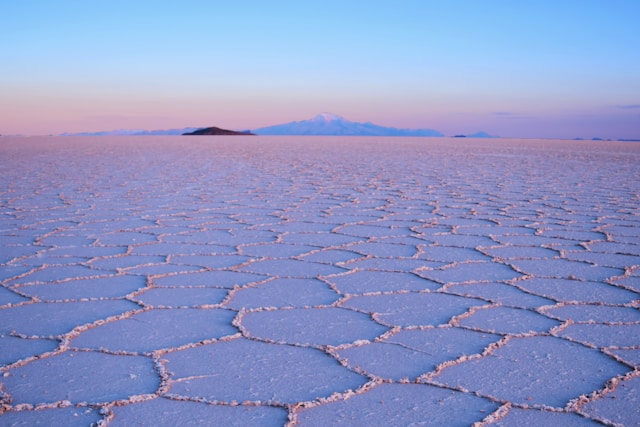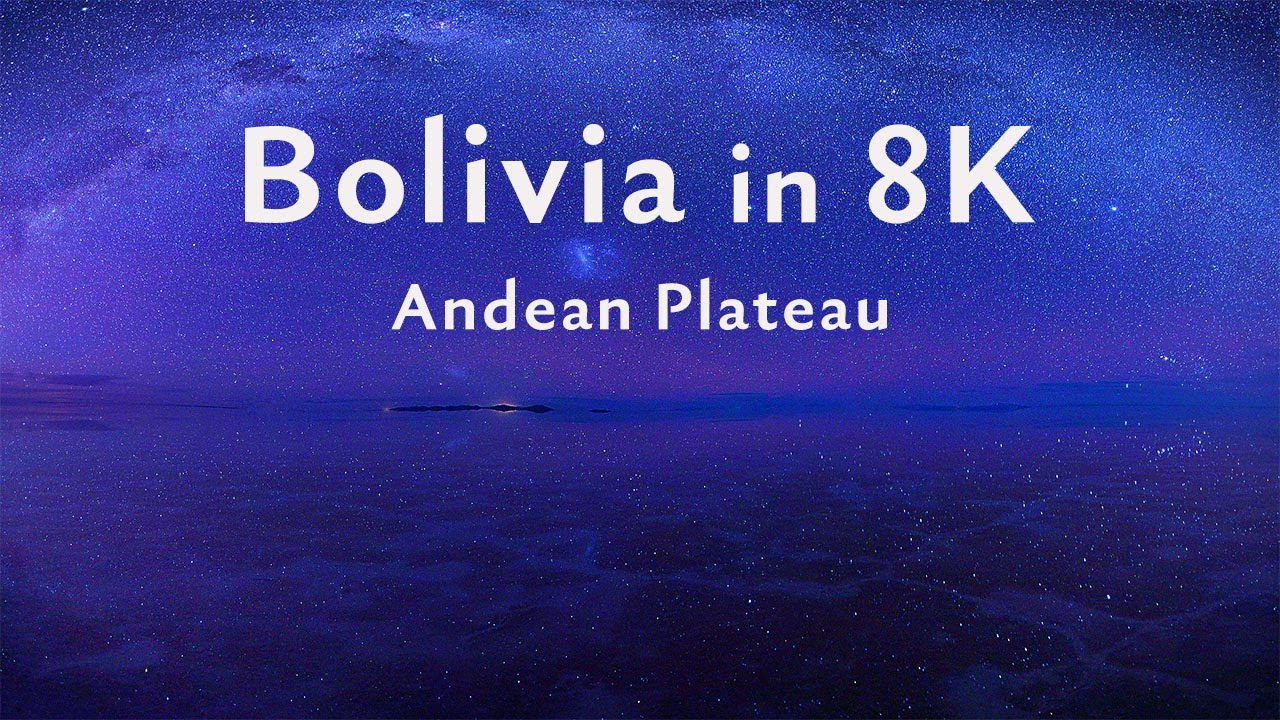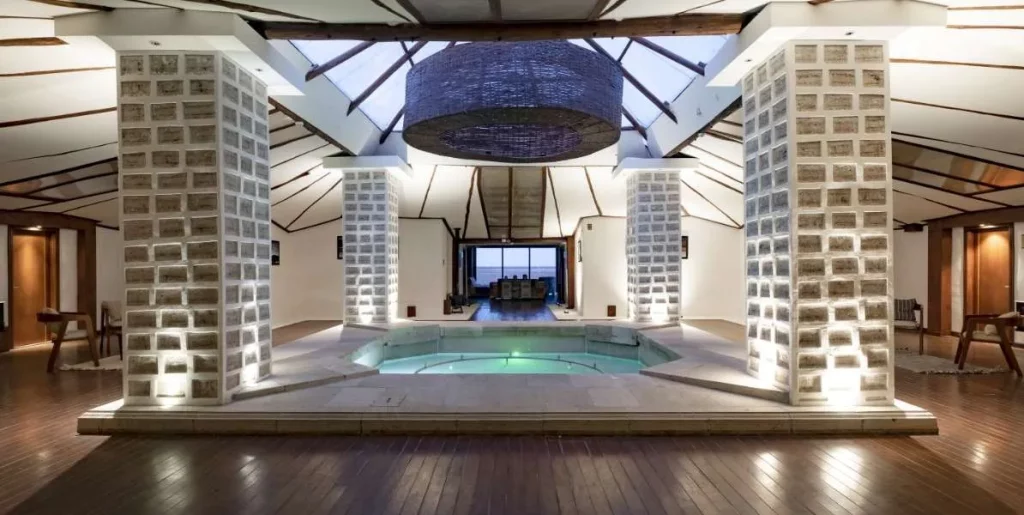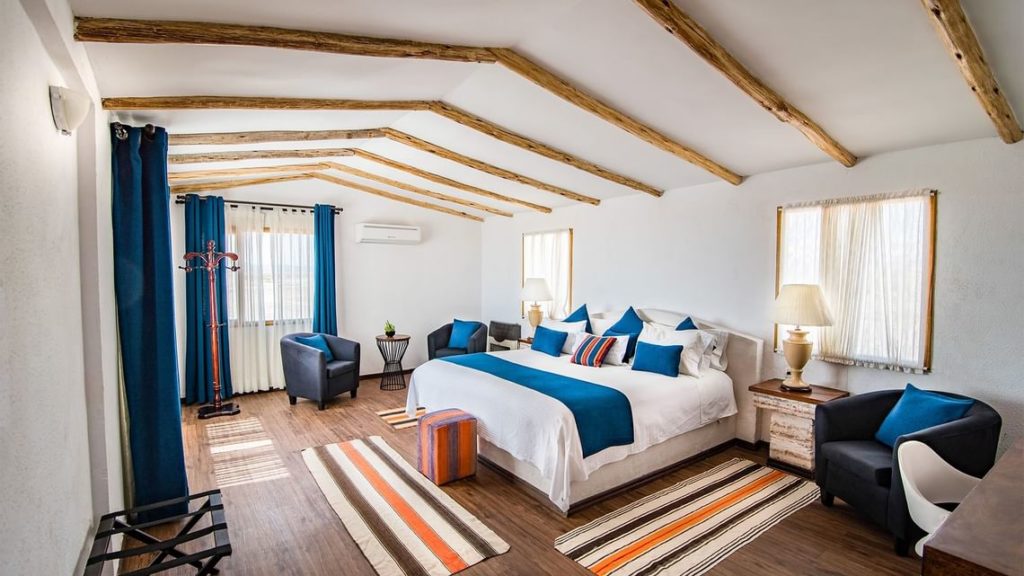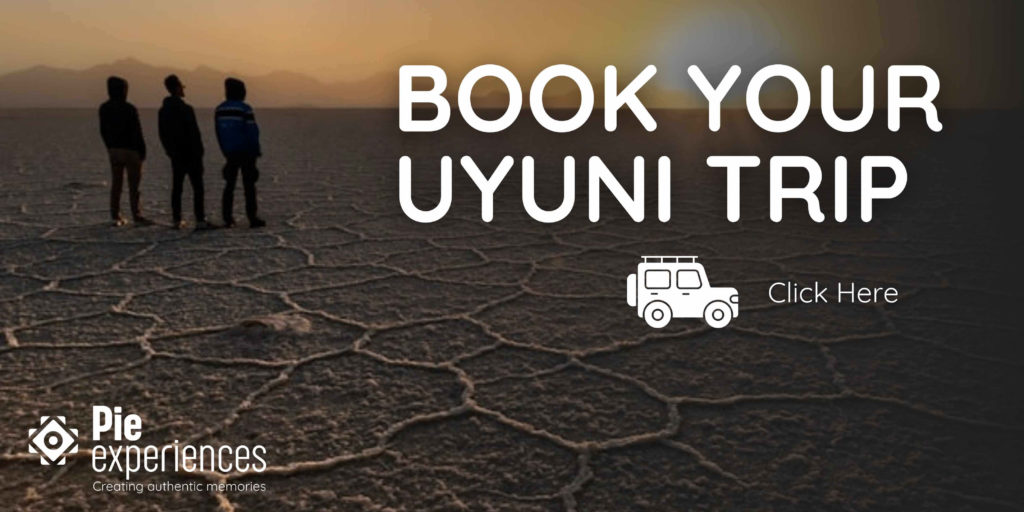Greetings, fellow adventurers! Today, I am thrilled to introduce you to a destination that embodies the very essence of wanderlust and discovery – Uyuni, Bolivia. Tucked away in the captivating landscapes of the Bolivian highlands, Uyuni beckons travelers with its surreal beauty and otherworldly allure.
You don’t just arrive at the Uyuni Salt Flats — you cross into another version of reality.
At over 3,600 meters above sea level, this place feels closer to the sky than to anything man-made. Salt stretches in every direction, hard and white like ancient bone. The sun burns through clean air. The silence presses in. Time moves differently here.
Out in the flats, there are no roads, no fences, no phone signals. Just the cracked surface of a prehistoric lake and the vast Bolivian sky reflecting back at you during rainy season. One moment, you’re in the driest desert imaginable; the next, you’re walking across a mirror.
The Uyuni Salt Flats reshape your sense of scale. Of silence. Of what matters. And if you let it, this place will stay with you longer than any photo ever could.
Imagine arriving in this remote town, surrounded by nothing but the untamed wilderness of the Andes Mountains. As you step onto the dusty pathways of Uyuni, you’re immediately struck by a sense of anticipation, knowing that you are about to embark on an extraordinary journey into the heart of nature’s grandeur.
But what truly sets Uyuni apart is its crown jewel – the legendary Uyuni Salt Flats, the largest salt flat on Earth. Imagine yourself standing amidst this glistening expanse, deep within the Andes, where earth and sky merge into a breathtaking panorama. It’s a scene that feels like a dream, where reality fades and magic comes to life.
Yet, Uyuni isn’t just about the salt flats; it’s the gateway to a rugged, unforgettable expedition. From the vibrant reds of Laguna Colorada to the bubbling geysers of Sol de Mañana, each Andean marvel is a testament to the raw power of nature, waiting to be explored.
Let us guide you through Uyuni’s captivating landscapes. From surreal vistas to the warmth of local hospitality, every moment in this enchanting world is a journey of discovery.
How to Get to Uyuni Salt Flats: The Journey Begins
Getting to the iconic Uyuni Salt Flats is an adventure in itself, and luckily, there are several ways to make the journey. Here’s a breakdown of your options:
🛫 By Airplane: If you’re short on time or prefer the convenience of air travel, flying from El Alto International Airport in La Paz to Joya Andina Airport in Uyuni is your best bet. It’s a quick and scenic flight that offers stunning aerial views of the Andean landscape, allowing you to catch a glimpse of the vast expanse of the Uyuni Salt Flats from above.
Flight company : Boa airlines
🚙 By 4×4 Excursion: For the adventurous souls craving an immersive experience, embarking on a multi-day 4×4 excursion from La Paz to Uyuni is the way to go. This rugged journey takes you off the beaten path, allowing you to traverse through remote villages and stunning landscapes before arriving at the Uyuni Salt Flats. It’s an unforgettable adventure that allows you to truly connect with the natural beauty of Bolivia’s most famous attraction.
Enjoy a 4 day excursion to Uyuni from La Paz
🚌 By Local Bus: Traveling by local bus is a budget-friendly option for those who don’t mind a longer journey. You can catch an overnight bus from La Paz to Uyuni, where you’ll wind your way through the winding roads of the Andes Mountains, soaking in the breathtaking views along the way before arriving at the mesmerizing Uyuni Salt Flats.
Buses from La Paz to Uyuni here
🚌🚂 By Bus to Oruro and Then Train to Uyuni Town: Another option is to take a bus from La Paz to Oruro, a city located southwest of La Paz. From Oruro, you can catch a scenic train ride to Uyuni town. While this route takes a bit longer, it’s a great way to experience Bolivia’s diverse landscapes and travel like a local, all while making your way to the captivating Uyuni Salt Flats.
Discover Uyuni Town in a Day: Unveiling the Heart of Bolivia
Set out on a whirlwind exploration of Uyuni town, a charming oasis nestled amidst Bolivia’s awe-inspiring landscapes. In just one day, you can immerse yourself in the rich culture, history, and natural wonders that make this town a must-visit destination. Here’s a glimpse of what you can experience:
- Train Cemetery: Begin your adventure with a visit to the iconic Train Cemetery, a testament to Bolivia’s industrial past. Wander among the rusting locomotives and carriages, each with its own story to tell, and capture unique photos against the backdrop of this fascinating site, setting the stage for your journey to the Uyuni Salt Flats.
- Uyuni Main Square (Plaza Arce): Take a leisurely stroll through the bustling streets of Uyuni town and arrive at the picturesque Main Square, Plaza Arce. Marvel at the colonial architecture, soak in the vibrant atmosphere, and perhaps indulge in a cup of freshly brewed coffee at one of the charming cafes dotting the square.
- Local Markets: Dive into the vibrant tapestry of colors and flavors at the local markets in Uyuni town. Explore stalls overflowing with traditional handicrafts, textiles, and souvenirs, and savor the opportunity to sample local delicacies and street food offerings, immersing yourself in the authentic essence of Bolivian culture.
- Church of San Cristobal: Step inside the historic Church of San Cristobal and admire its exquisite architecture and ornate interior. Take a moment to soak in the tranquil atmosphere and reflect on the town’s rich religious heritage, a peaceful respite amidst the bustling streets.
- Uyuni Salt Flats Tours: While not within Uyuni town itself, no visit to the area would be complete without experiencing the mesmerizing Uyuni Salt Flats. Join a guided tour to explore this otherworldly landscape, marvel at the vast expanse of salt stretching to the horizon, and capture unforgettable photos as the sun casts its golden glow over the surreal terrain.Here you can check all the tours we offer to Uyuni Salt Flats.
-
Night and Stargazing Tours: As night falls, embark on a mesmerizing Night Star Tour to witness the celestial wonders above Uyuni. Away from the city lights, you’ll be treated to a dazzling display of stars, planets, and constellations, painting the night sky with their brilliance. It’s a magical experience that will leave you in awe of the universe’s vastness and beauty.
Uyuni Salt Flats Escapade: Three Days of Exploration and Wonder
Day 1: Explore the surreal landscapes of the Uyuni Salt Flats, marveling at the vast expanse of salt and capturing stunning photos of the mirror-like reflections. Visit the Incahuasi Island, home to towering cacti and panoramic views of the salt flats.
Day 2: Journey through the Andean landscapes, visiting the colorful Laguna Colorada, inhabited by flamingos, and the geothermal wonders of Sol de Mañana. Admire the surreal beauty of the Salvador Dalí Desert and relax in natural hot springs.
Day 3: Witness the breathtaking sunrise over the Siloli Desert and its famous rock formations, including the iconic Arbol de Piedra. Explore the Eduardo Avaroa National Park, home to stunning landscapes, high-altitude lakes, and diverse wildlife before returning to Uyuni town.
Beyond Borders: Unveiling the Best Hotels near Uyuni Salt Flats
- Location:
- Uyuni City: Uyuni city is the largest urban area near the Uyuni Salt Flats. It is situated about 20 kilometers (12 miles) north of the salt flats.
- Colchani: Colchani is a small village located closer to the Uyuni Salt Flats, approximately 6 kilometers (3.7 miles) south of the flats.
- Atmosphere:
- Uyuni City: As a larger urban area, Uyuni city offers more amenities such as restaurants, shops, and services. It has a bustling atmosphere with a mix of locals and tourists.
- Colchani: Colchani is a quieter and more rustic village compared to Uyuni city. It has a more relaxed atmosphere and is closer to the natural beauty of the salt flats.
- Accommodation Options:
- Uyuni City: In Uyuni city, you’ll find a wider range of accommodation options including hotels, hostels, guesthouses, and boutique lodgings. There are options to suit different budgets and preferences.
- Colchani: Accommodation options in Colchani are more limited compared to Uyuni city. However, there are still several hotels, guesthouses, and salt hotels (hotels made of salt) available for travelers seeking a unique experience close to the salt flats.
- Proximity to Attractions:
- Uyuni City: While Uyuni city is not directly adjacent to the salt flats, it serves as a convenient base for exploring the area. Tours to the Uyuni Salt Flats typically depart from Uyuni city.
- Colchani: Colchani is situated much closer to the Uyuni Salt Flats, making it an ideal location for travelers who want quick access to the salt flats. Some accommodations in Colchani offer panoramic views of the salt flats and provide easy access to tour operators.
As you bid farewell to Uyuni and the salt flats, carry with you the memories of endless horizons, stunning sunsets, and moments of pure wonder. Whether you’re a seasoned traveler or embarking on your first adventure, Uyuni leaves an indelible mark on the soul, reminding us of the beauty and majesty that exist in the world around us.
So as you journey onward, may the spirit of Uyuni continue to inspire and guide you, leading you to new adventures and discoveries wherever your travels may take you. Until we meet again, farewell, Uyuni, and thank you for the memories that will last a lifetime.
Uyuni Salt Flats FAQs
When is the best time to visit the Uyuni Salt Flats?
That depends on the kind of magic you’re chasing.
From May to October, the dry season gives you those iconic white hexagons and big blue skies. But if you’re after the mirror effect — where the sky reflects off the water and the horizon disappears — go between January and March, during the rainy season. Just pack waterproof everything, including your patience.
How do I get to Uyuni?
You’ve got two main options: fly or suffer.
There are daily flights from La Paz to Uyuni — quick, painless, often overbooked. The bus? It’s overnight, it’s bumpy, and your spine might never forgive you. But hey, it’s cheap, and you’ll wake up somewhere completely unreal.
What is the mirror effect and when does it happen?
It’s what happens when shallow rainwater covers the salt crust and the sky reflects perfectly across the surface. It looks fake — like a glitch in reality. This happens mostly between January and March, though climate’s always a little unpredictable out here.
Are Uyuni Salt Flat tours safe?
For the most part, yes — but choose your operator wisely.
Stick with licensed guides and reputable tour companies. Ask how often they maintain their vehicles. Don’t just follow the cheapest price — out here, cheap can turn into stranded real fast.
What should I pack for a tour of the Uyuni Salt Flats?
Layers. The cold at night hits different at 3,600 meters.
Bring warm clothes, a scarf or buff for the dust, sunglasses (white salt is blinding), and sunscreen even if it’s cloudy. Don’t forget extra camera batteries — there’s nowhere to charge in the middle of nowhere.
What should I pack for a tour of the Uyuni Salt Flats?
Layers. The cold at night hits different at 3,600 meters.
Bring warm clothes, a scarf or buff for the dust, sunglasses (white salt is blinding), and sunscreen even if it’s cloudy. Don’t forget extra camera batteries — there’s nowhere to charge in the middle of nowhere.
Can I visit Uyuni Salt Flats on my own?
Technically yes, but you’ll miss the good stuff.
The terrain is remote, and getting lost in a salt flat is not the kind of adventure you want. A guided tour takes you to places you’d never find alone — flamingo-filled lagoons, surreal deserts, cactus-covered islands. Go with a guide and spend your energy on the experience, not on directions.
Is altitude sickness a real issue in Uyuni?
Yes, and it doesn’t care how fit you are.
At over 3,600 meters, you might feel dizzy, tired, or just weird. Drink coca tea, go slow, stay hydrated, and avoid heavy meals your first day. If you’re coming from sea level, give yourself time to adjust. Soroche is real — and it’s a terrible souvenir.


